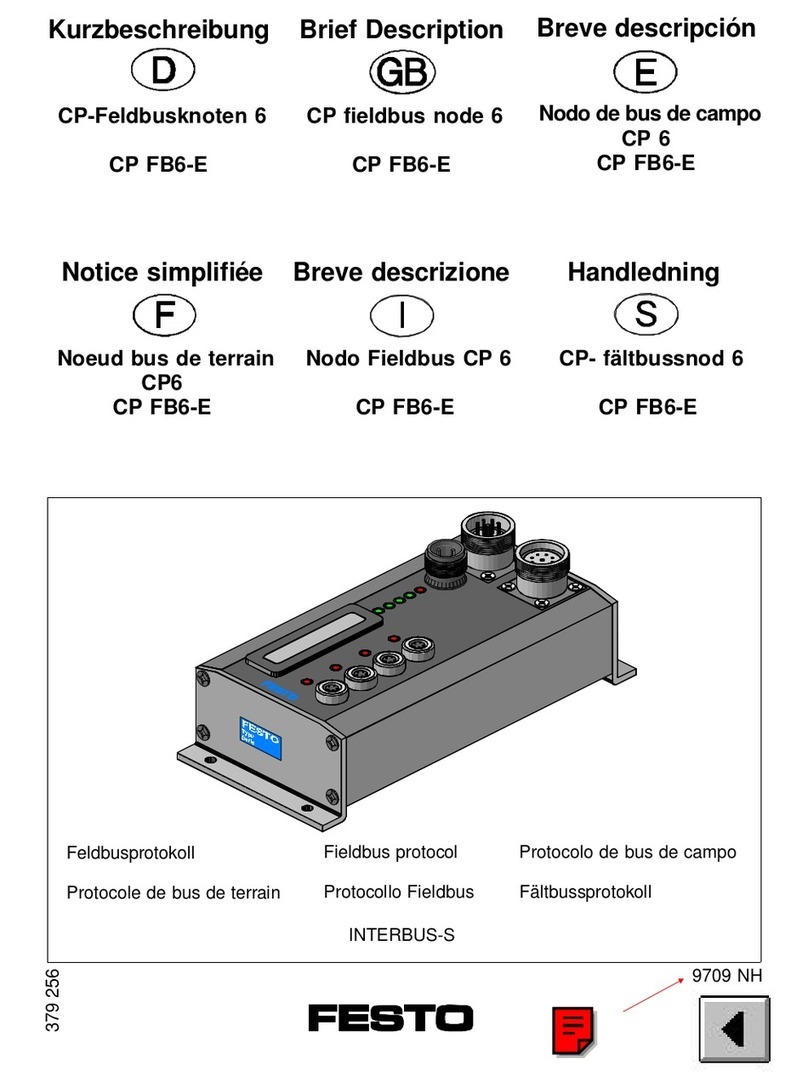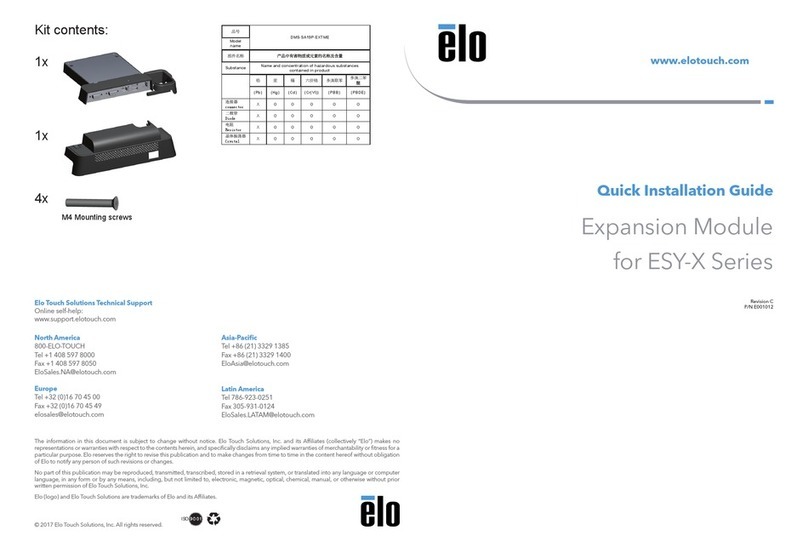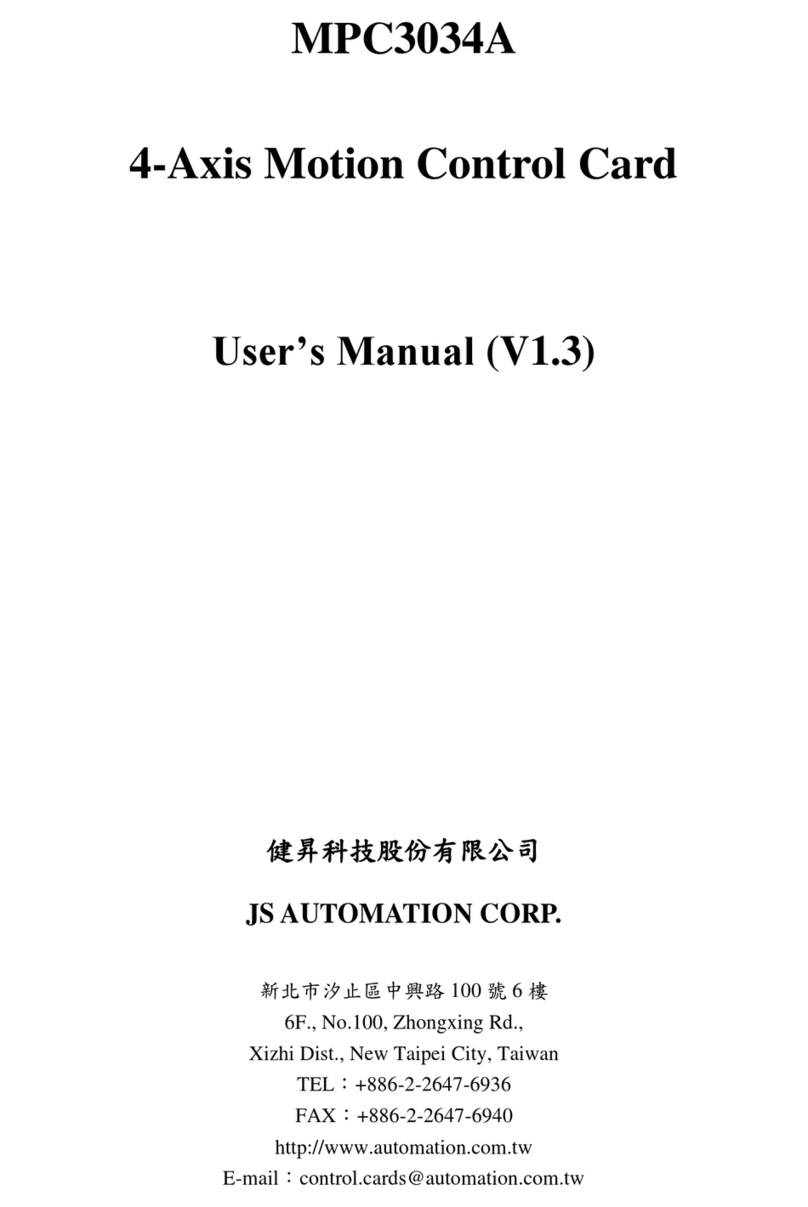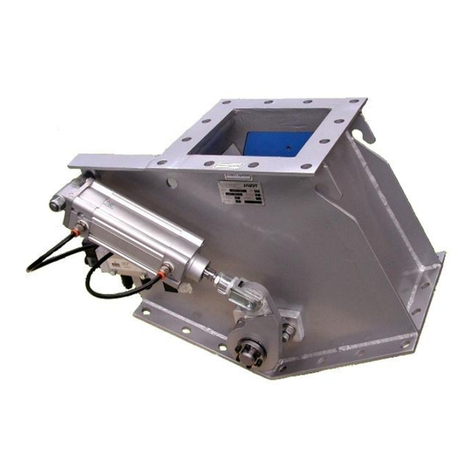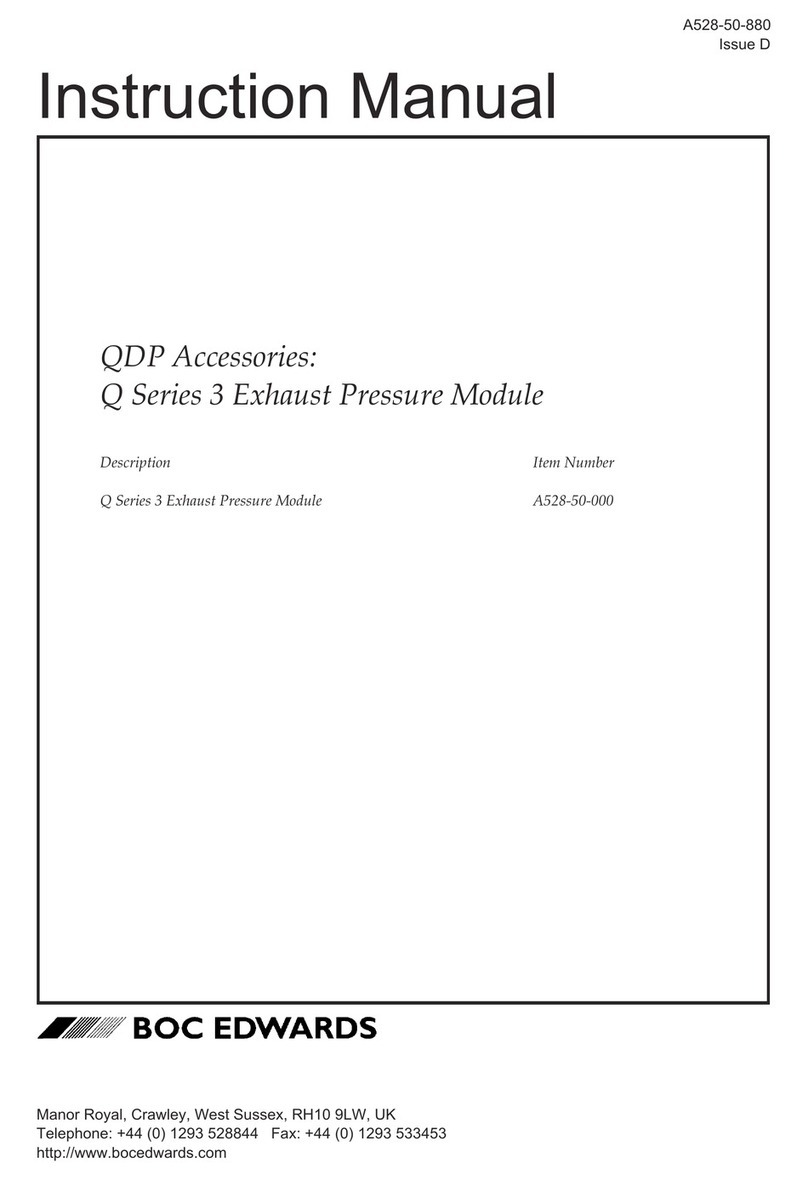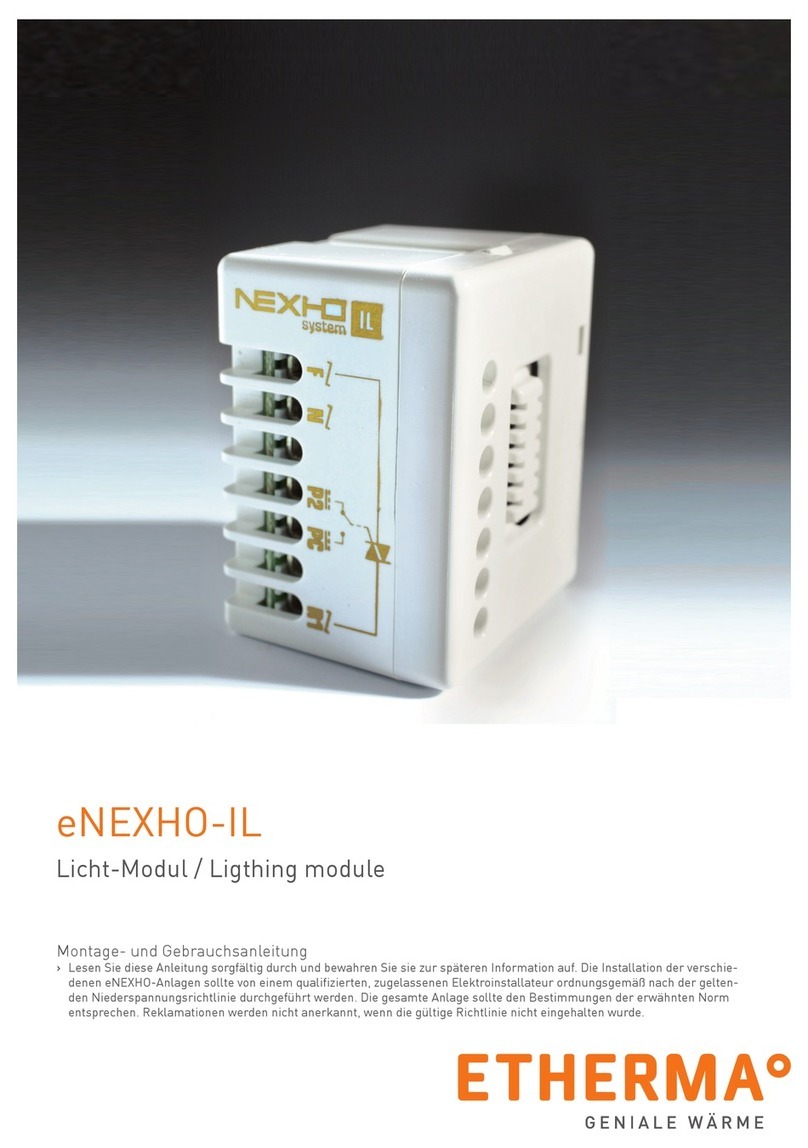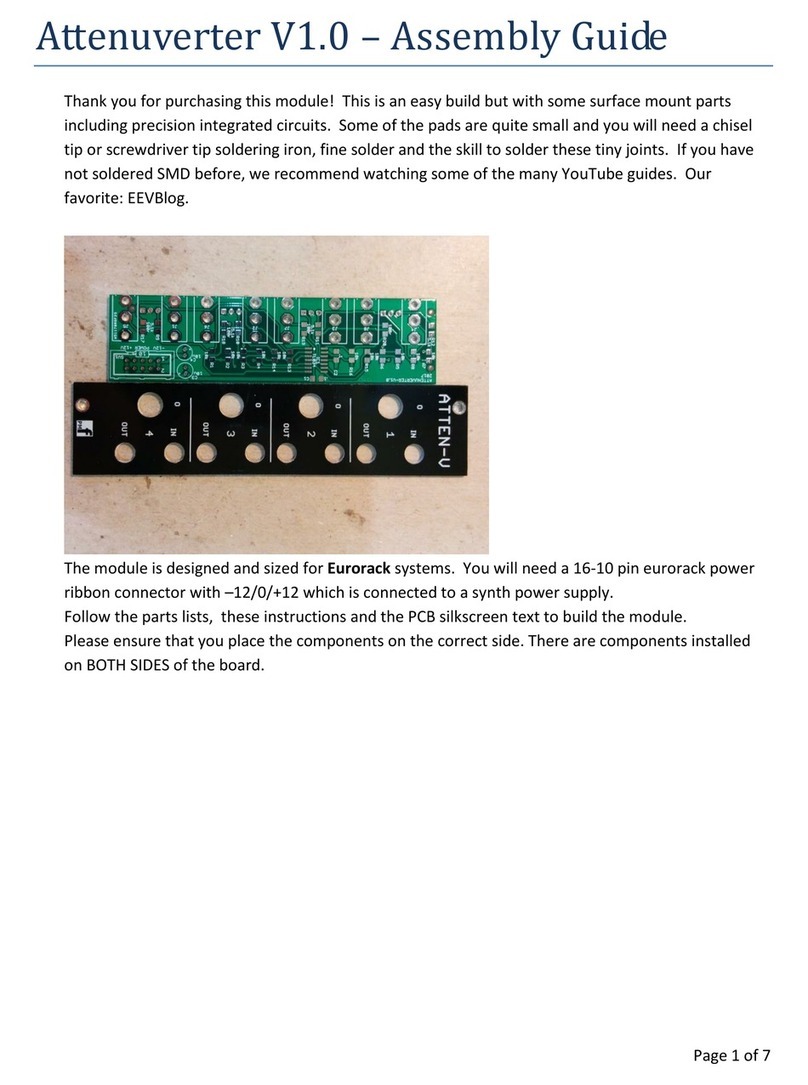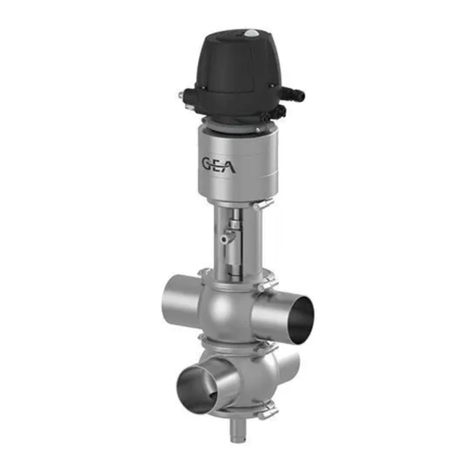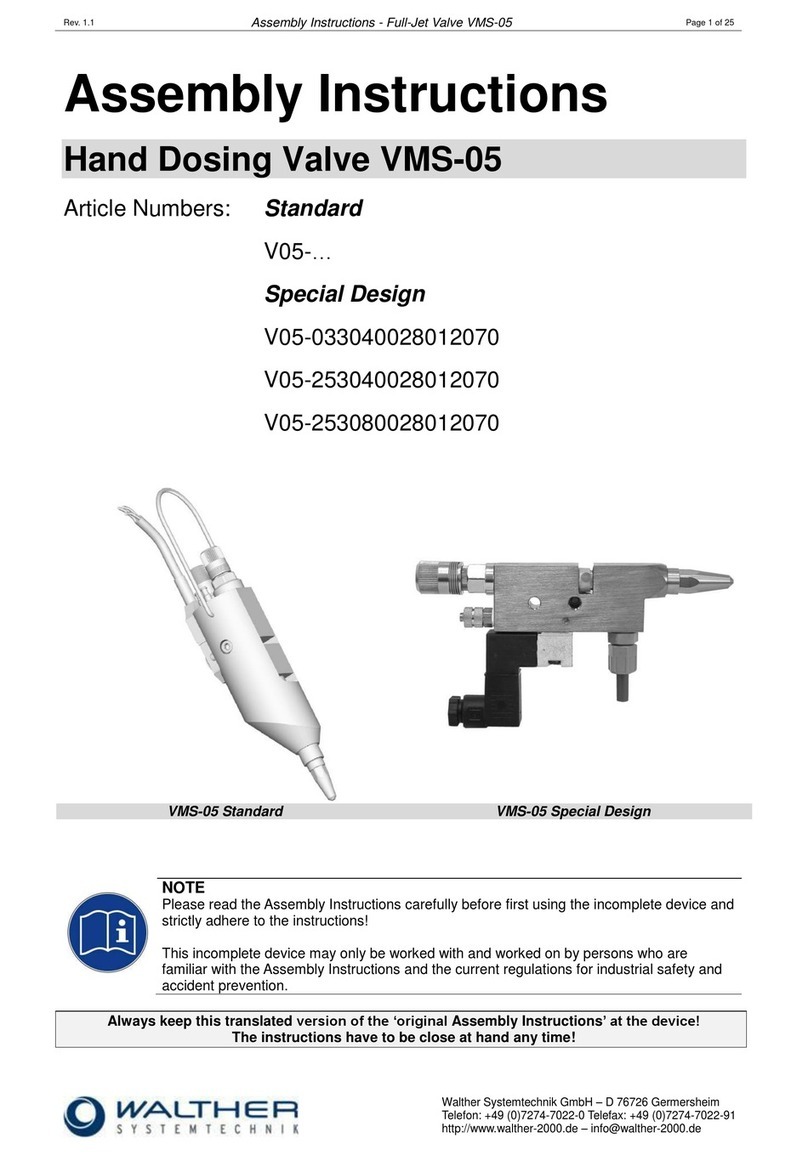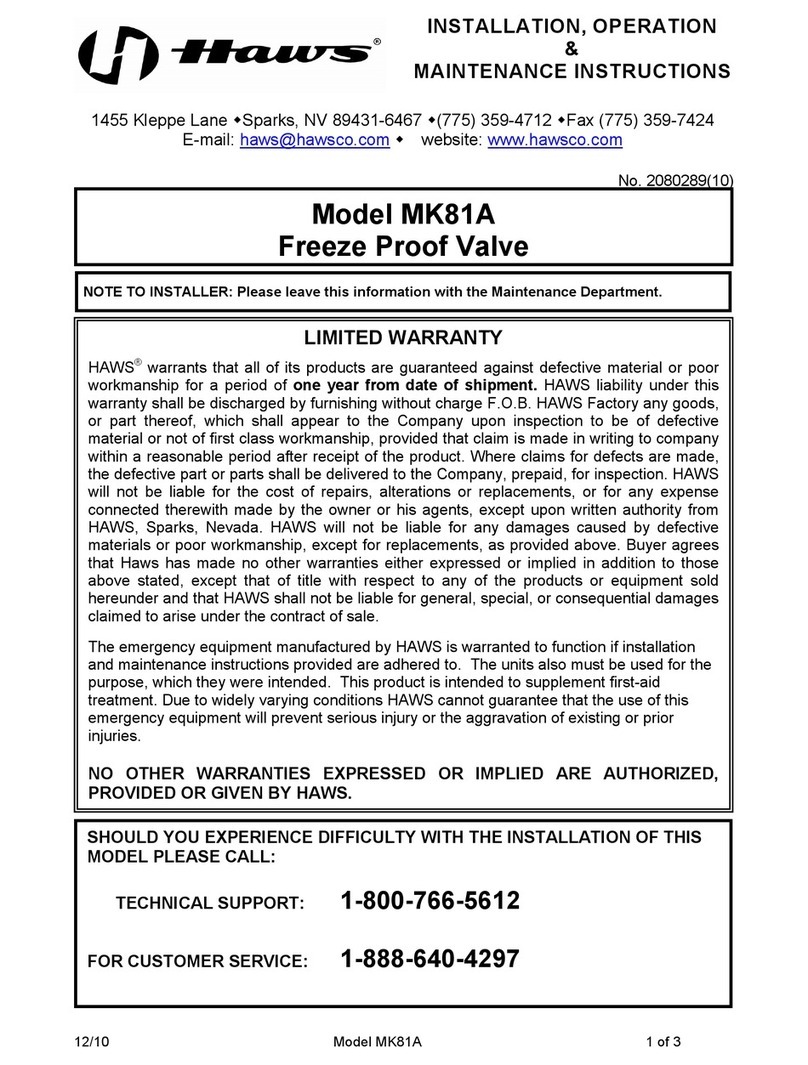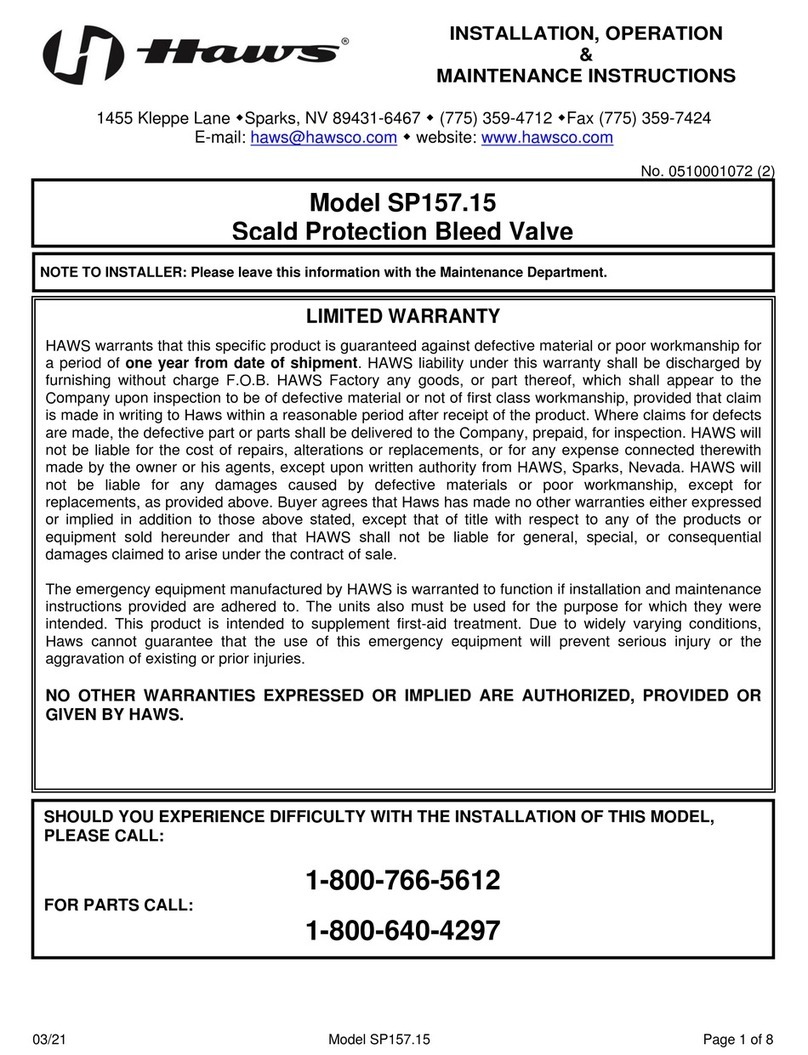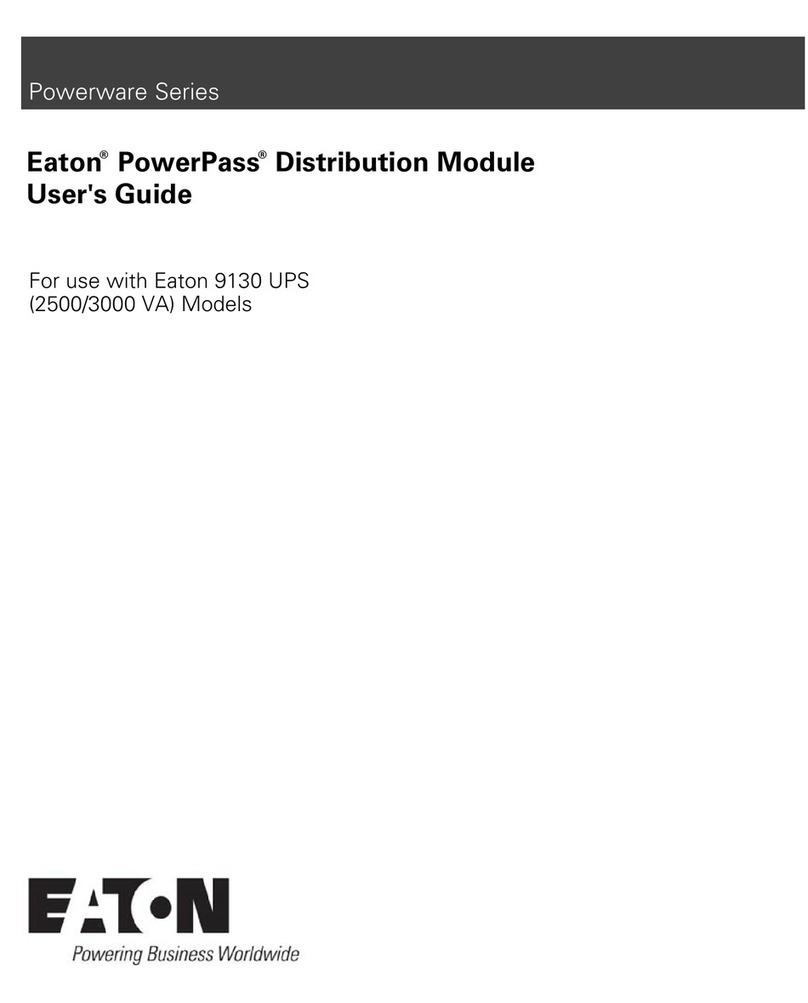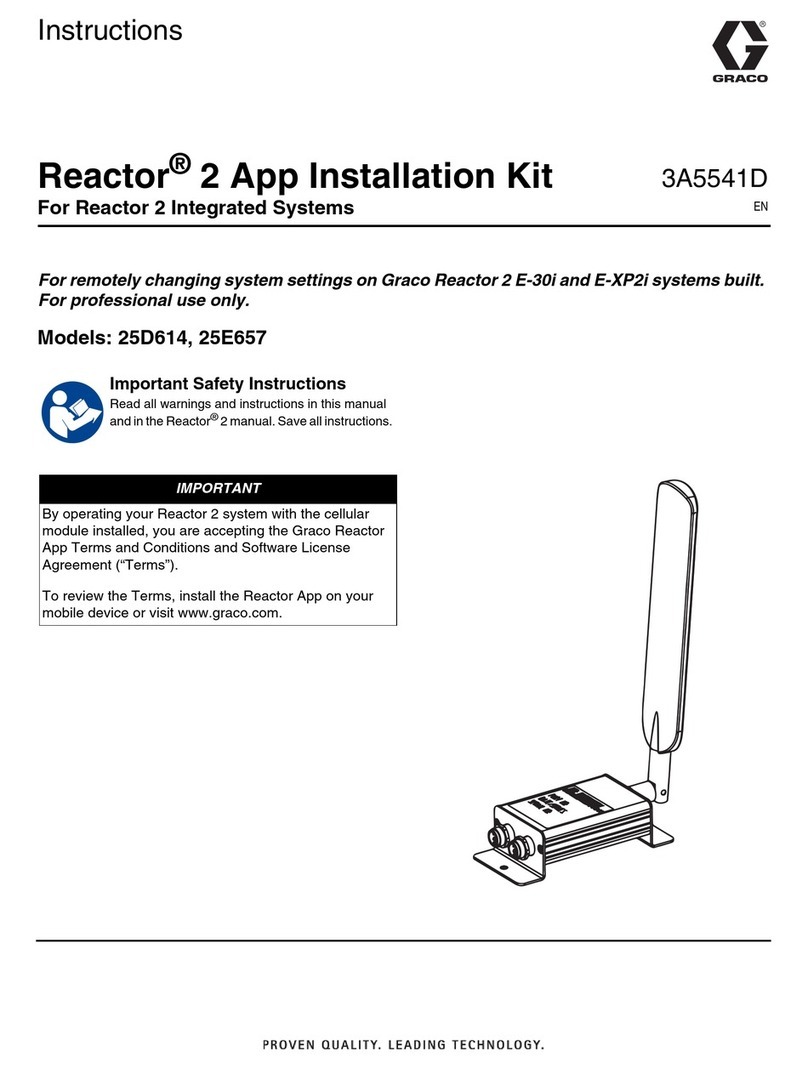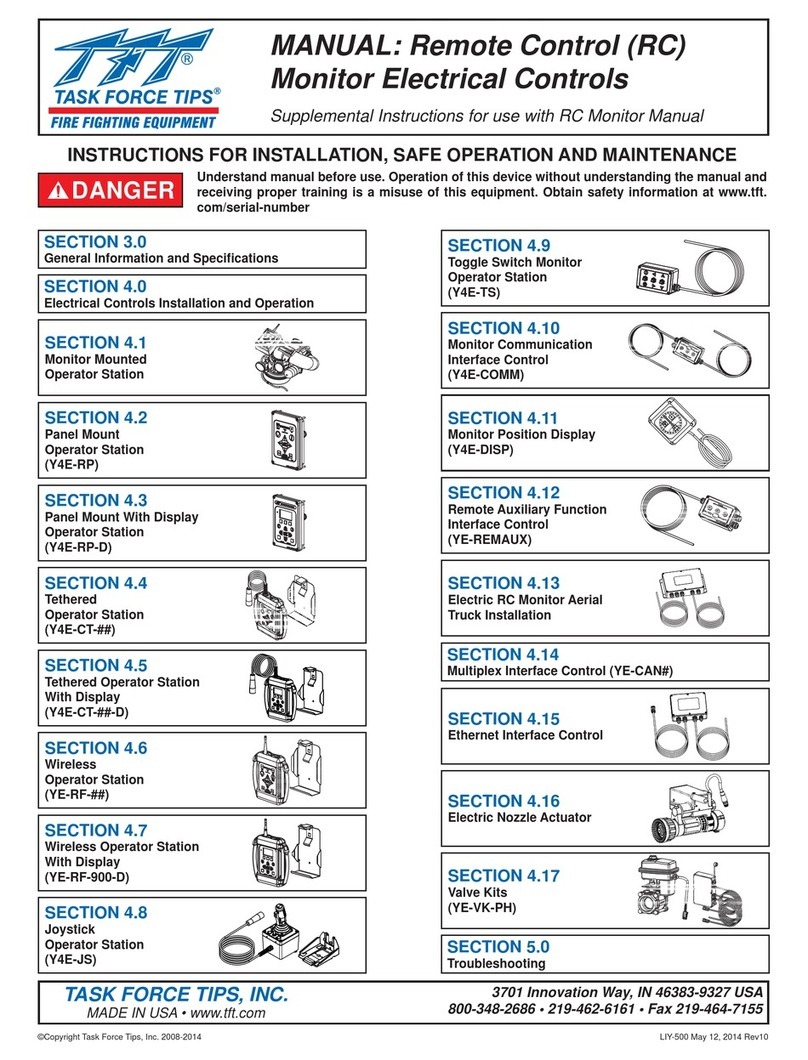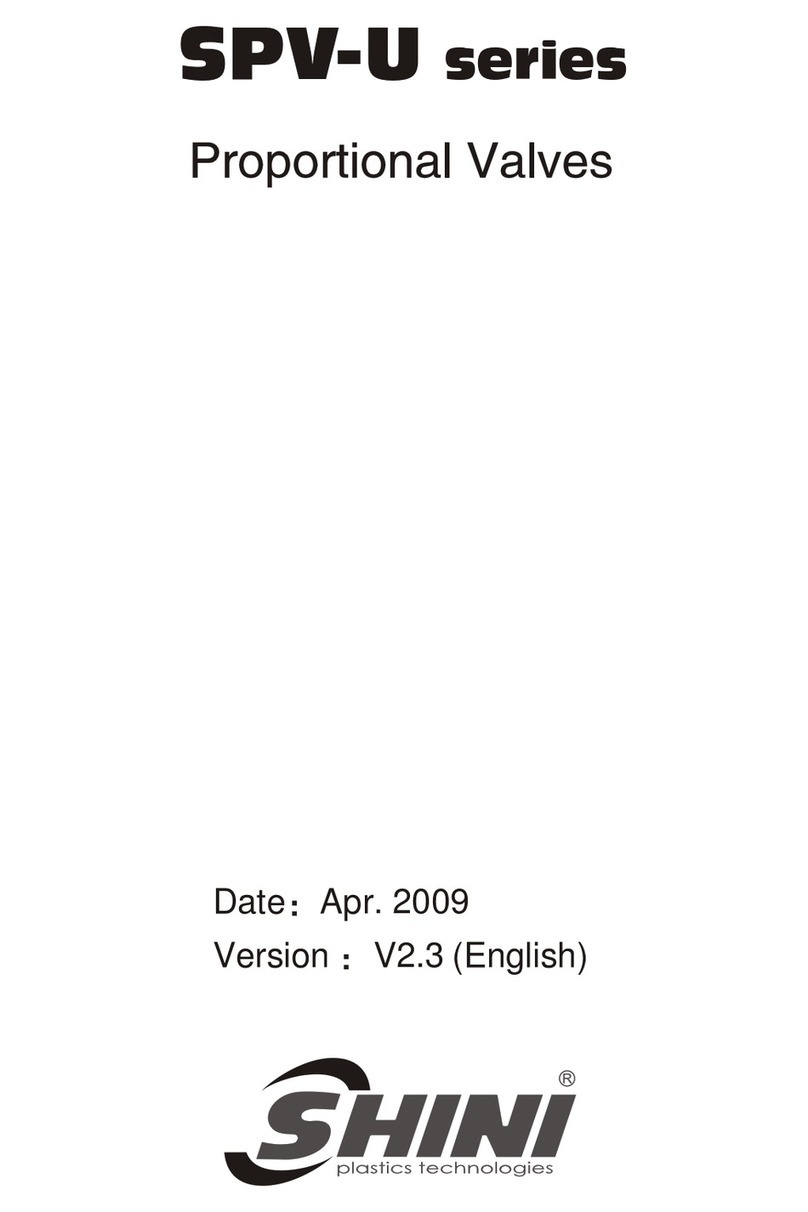
5. Insert a 5/32″allen key into the cap opening of
valve 1 (V1) and seat in the adjustment screw
(not shown). Set the outlet temperature by turn-
ing the adjustment screw-clockwise to reduce
temperature, counterclockwise to increase tem-
perature. Use thermometer (T1) to measure the
outlet temperature.
6. Adjust valve 2 (V2) using the same procedure
used to adjust valve 1 (V1).
7. Examine thermometers T1 and T2. Valve 1 and
valve 2 should be set to the same temperature
and the outlet temperature should be 85°F
or as specified for your application. Adjust if
necessary.
8. Replace cap screws #3, lockout plate #2 and
padlock #1.
Testing the Mixing Valve
The mixing valve and the emergency fixtures it serves
should be tested weekly for proper operation.
Valve temperature test procedure is as follows:
1. Activate shower fixtures to observe and record
the temperature of the thermometers T1, T2, and
T3. The valve is functioning properly if the T1
and T2 temperatures are equal and T3 is at the
proper outlet temperature. If the temperature of
thermometers T1 and T2 are not equal, readjust
the mixing valve according to the section “Setting
the Mixing Valve.” Slight variations between the
valve set temperatures and the outlet tempera-
tures may occur.
2. Observe the flow from the emergency fixtures to
ensure an adequate flow of water.
In addition to testing for proper temperature, the cold
water by-pass and hot water shut down features of
the mixing valve should be tested weekly.
The test procedure is as follows:
1. Test valve temperature as described in Step 1
and Step 2 above.
2. Shut off the hot water supply to the mixing valve.
Observe the outlet flow from the emergency fix-
tures to ensure an adequate flow of cold water.
A slight drop in flow may occur after shutting
down the hot water supply to the mixing valve;
however, the drop should be minimal and for a
short duration.
3. Open the hot water supply to the mixing valve.
Thermometers T1 and T2 should return to their
set temperatures and T3 to the proper outlet
temperature.
4. Shut off the cold water supply to the mixing valve.
The flow of water should shut down rapidly.
5. Open the cold water supply. Thermometers T1
and T2 should return to their set temperatures
and T3 to the proper outlet temperature.
Note: Thermometers T1, T2, and T3 should be
checked at least every six months.
Replacing a Thermostat Cartridge
The thermostat replacement procedure is as follows:
NOTE: We recommend that you work safely at all
times and in a manner consistent with the OSHA
Lock/Tagout standard, 29 CFR 1910.147 and other
applicable standards.
1. Shut off the hot water supply and cold water
supply to the mixing valve.
2. Unscrew valve V1 or V2 (depending on which
valve is not operating properly) and install a new
thermostat cartridge assembly.
3. Open the hot water supply and the cold water
supply to the mixing valve. Check the tem-
perature to see if the replacement cartridge is
operating correctly. If the temperature requires
adjustment refer to the section “Setting the Mix-
ing Valve.”
Operating Principle
The Mixing Valve is made of two independent
thermostats housed in a single casting. The twin
thermostatic cartridges respond independently to
incoming hot and cold water temperatures and
provide backup protection against element failure.
If one element fails, the other should continue to
function properly. If only one element is operat-
ing the valve will experience a decrease in outlet
temperature (T3). For this reason the Valve re-
quires testing and maintenance on a regular basis.
In the event of element failure, the cartridge will
provide full cold water flow. The resulting temperature
difference between the two valves will be reflected
by T1 and T2.
Valve 2
(V2)
Valve 1
(V1)
Page 3 of 7
